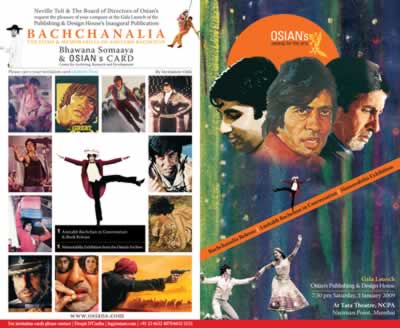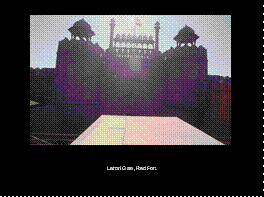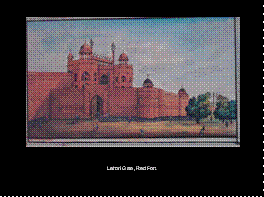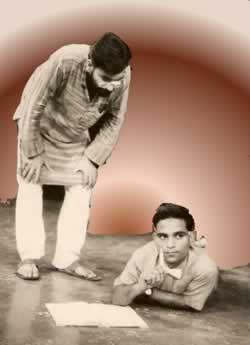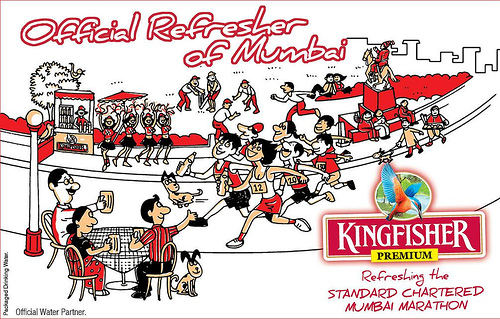
Most discussions – and demonstrations, now that the next edition of the Bharangam is upon us – of what ails contemporary theatre rarely take into account the role of the audience. In an environment where the audience’s contribution to the making of meaning is barely acknowledged, it is unlikely that its responsibility for the state of the theatre will ever be admitted. Audiences do of course get noticed, but only in the context of dwindling attendance at plays, or strategies to entice spectators back to the theatre. Such ‘concern’ for the audience masks a worryingly patronising attitude. It sees spectators as little more than passive receptors of other people’s intention, dry vessels waiting open-mouthed for the filling. One may as well not invoke the audience for all the insight that such invocations offer.
At first glance, it seems logical to exclude the audience from analyses of the theatre, for the audience does not concoct the brew being poured down its gullet. In fact, it often resists being bottle-fed and sometimes even resents the after-taste. So, on the face of it, no audience can be held directly responsible for the spectacle that theatre often makes of itself.
However, theatregoers cannot thereby wash their hands of the matter. The sense of an audience — an expectation of whom the play is being performed for — creeps into the decisions that performers make, both before and during the enactment, to such an extent that it shapes the final outcome as directly as if the audience had sat in on the creative process. This happens all the time, regardless of how accurate or credible the group’s idea of its target audience may be. There is, therefore, a point beyond which audiences can no longer claim ‘innocence’. Spectators cannot escape responsibility for what is performed for them. Or, put more accurately, for what they accept as passable in performance. Complicity is structured into the relation between performers and spectators, even if the relation is a silent one.
Perhaps, the fact of complicity stems from such silence. No complicity is as demeaning as that in silent acquiescence. This is especially glaring in the theatre where performers and spectators inhabit the same physical space, and where exchange is immediate, tangible and therefore possible. It can be argued that it is naïve to expect a dialogue between patrons and performers when there is so little traffic between theatre groups themselves. Some groups attempt to reach out and ‘talk’ to its spectators beyond the footlights, but most are content or resigned to interpret their audience through ticket-sales and applause.
Nevertheless, I’d imagine that the responsibility for creating a stimulating theatre rests equally – if not finally – on those who dole out good money to see these performances. The failure of a play is often the failure of its audience, especially when spectators are unwilling, whether through politeness or indifference, to call a spade a spade. When was the last time a Delhi audience collectively protested against the quality of a production? In silently ingesting whatever is on offer — or, in protesting quietly and privately — spectators do a great disservice to those who have stopped going to the theatre, as also to those who stay away from it.
The argument that audiences are powerless to effect change is not as reasonable as it initially appears. Accomplices do not have power handed to them on a platter. What sullen accomplices do have is unlimited opportunity to seize power for change. ‘Ticket-sales’ and ‘applause’, for instance, are two vocabularies through which spectators can register their protest. Theatre groups understand these vocabularies, for no group can afford to alienate that miniscule minority which still visits the theatre. Can you imagine any group churning out tripe, production after production, if nobody sat through it all? (As the old Sixties slogan ran: ‘Suppose they gave a war and nobody came¼’.) It is all very well for us high-minded types to have criticised Aamir Raza Husain and his theatre group Stagedoor for having inundated Delhi with a particular variety of prurient bedroom comedy a decade ago. The fact is that the Kamani auditorium had then run to full houses, and night after night, you couldn’t get tickets half an hour before the show. Husain was merely giving the audience what it wanted; it’s the spectators who turned out to be the idiots and the fools.
But Stagedoor is a soft target, one about which it is impossible to disagree. A less obvious arena of disaffection is the NSD Repertory. With most of its productions bearing the chhap of vintage years, several of the Repertory’s productions today seem like museum pieces that are not noticeably different from the memories of past productions enshrined in its theatre museum. Yet, the Repertory manages an audience, an army of the faithful that sees nothing wrong about being caught in a time warp. So, the NSD Repertory blithely continues on its narcissistic path of self-imitation.
In both these cases, the audience’s uncritical acceptance of the plays pre-empts self-evaluation. Surely the idea that theatre ought to reflect the aspirations of the people is not intended as a re-formulation within aesthetics of the law of supply and demand. But that is precisely how so much of so little worth gets by: after all, runs the argument, how can something be bad if the audience doesn’t think it so? That old argument of supply & demand turns a contingent moment into a principle, and confers virtue upon the opportunist. Whenever there is a demand, there will always be somebody willing to supply the need. As to which is the cause and which the effect, you can argue yourself blue in the face and remain none the wiser. One way out of the trap, as some do-gooders have tried, is to unilaterally decide what is beneficial for the audience, irrespective of what the audience thinks is good for itself, and sanguinely offer just that for the edification and pleasuring of a benighted public. And, in the process, move from undermining the theatre from below to corroding it from the top.
Why should a group of seemingly normal people lapse into appalling taste when assembled? What is the combustion that makes otherwise alert individuals metamorphose into an uncritical, slumbering mass that is content to be led by the nose? A common explanation is that Delhi’s theatre-going fraternity is a large club; and it is difficult to be honest, even with oneself, within these spiralling circles of friendship.
But social niceties alone cannot explain an audience’s generosity of spirit when confronted by a poverty of imagination and taste. Of the other reasons, the feel-good factor is surely relevant. In the peculiar arrangements of our mainstream theatre, it is remarkable how a public that is lukewarm about the prospect of taking plays seriously, actually finds its anxieties evaporating into a careless geniality once it walks through the auditorium doors. The reasons for such geniality may vary. It could be a media-fuelled expectation of a good time, the grapevine recommendation of a place where “it’s happening”, or simply a forced attendance with obligatory smiles in tow. The consequence, however, is always the same: a frame of mind conditioned by expectation or habit into evading any kind of alert and critical response.
Watching a play is not an autonomous activity. Peter Brook defines an act of theatre as, “A man walks across [an] empty space while someone else is watching him, and this is all that is needed for an act of theatre to be engaged”. But his definition leaves out the vital dimension of community that characterises the theatrical experience. (Isn’t that why watching a play all alone in an auditorium leaves you feeling so terribly lonely?) The act of collective viewing has its own rhythm, which is distinct from, say, the rhythm of watching the TV by oneself. We’ve all sensed, as part of an audience, how our responses have been imperceptibly but steadily shaped by the responses of others in the auditorium. This is exhilarating when you are one with everybody else, but it can become enormously repressive should you find yourself out of sync with the rest of the crowd.
In non-consensual situations, collective viewing constricts free response by jostling and eroding individual stances of resistance to the performance. The invidious push ‘n’ shove between people of different persuasions and profiles reduces an audience’s collective potential for reading a performance against the grain. This is why the spectator, as a member of that amorphous collective, has less interpretative control over the text than the single reader engaged in a private act of reading. Sanity is restored only when the individual spectator withdraws into looking upon his neighbours as another kind of text.
Surprisingly, spectators are often unwilling to exercise even a minimal control: witness our readiness to vocalise our appreciation of plays but not our dissent. Laughing and applauding are okay, but booing is out. By a similar compact, spectators happily exchange evaluations of the performance’s technical features — acting, costumes, etc — but are far more circumspect in reacting to the meaning of the play.
Nowhere do we find a better instance of such degradation of individual spectator response than in the mass hysteria evident now when an entire nation of TV-gazers has been turned into one huge audience of the grand theatre called Mumbai 26/11. Such is the pressure of the people’s response (as selectively promoted through privately-owned media channels) that the bloody, messy business of killing and revenge has been cleansed and glorified through the quavering rhetoric of patriotism and sacrifice into a superior civilisational activity. (Interestingly, the hawks talk of killing, while the doves talk of sacrifice. The distinction between the two remains blurred because for both, war as a routine response is here to stay.) There are a few sane voices that refuse to be swept up in this general feeling. But where are these to be heard in the clamour of the warmongers who glibly espouse counter-violence as a simple solution to complex problems?
Be it the larger theatre or the small play, failings in public discourse can usually be traced back to the failure of audiences – and, to our irresponsible habit of lapping up whatever is served. So much then for our audiences’ ability to make sense.
An earlier version of this article was first published in FIRST CITY (July 1999)





